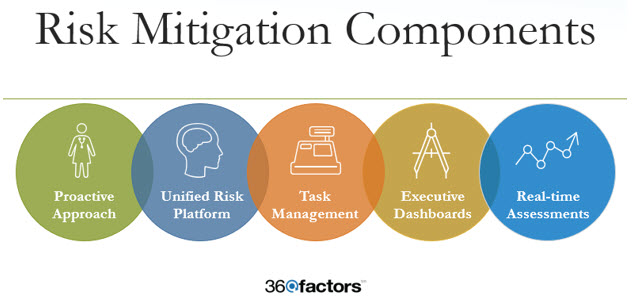Home/ Blog / Enhancing the Speed of Risk Mitigation
A proactive approach towards risk management is considered the most efficient way to mitigate risks quickly. There is a lot of focus on identifying emerging risks because when risks are identified earlier, they are easier to mitigate. However, sometimes there are risks which could not have been predicted. There are disruptions, such as national disasters, which can freeze industrial and business activity in a region, thereby disrupting global supply chains.
The possibility of an unpredicted risk suddenly emerging always exists, which is why businesses should focus not just on becoming faster at detecting risks but also faster at mitigating risks once they have been detected. Businesses need to be agile and flexible in their risk management approach, ensuring that the whole organization collaborates on risk controls and takes ownership of departmental risks. Businesses which have modern risk management strategies and technology can quickly assess the impact of new risks and put controls and backups in place.
Creating a risk mitigation framework that can quickly respond to risks requires not just the right approach but the right tools as well.
The Necessary Components for Faster Risk Analysis and Mitigation
Any organization can improve its risk analysis and mitigation pace if it has the right components included in its risk management framework. These components are:
- Proactive strategy
- Unified risk management platform
- Task management
- Executive dashboards
- Real-time assessments

Proactive Strategy
Every organization wants to be proactive when it comes to risk mitigation, but it does not come easy. It is easy to ask your employees to be proactive – the difficult part is in providing them with the right tools and culture. Proactive risk mitigation requires commitment from the organization to take risks seriously and collaborate as much as possible at eliminating or lowering risks.
This means that every department within the organization needs to take ownership of the risks inherent in their work and ensure that those risks are clearly communicated to the rest of the organization. Businesses where departments compete instead of collaborating end up hiding problematic information from the other departments, which leads to there being huge vulnerabilities in the risk mitigation framework.
Unified Risk Management Platform
Collaboration between departments is not just a matter of having the right attitude – there also needs to be a platform which allows people to easily collaborate. Collaborating over email is remarkably inefficient. Email threads are confusing to follow, and a lot of information gets lost in the hundreds of emails being sent every day. It is important to have a platform where everyone can view and share risk information.
Task Management
Risk mitigation involves setting up controls, looking for backups, and hundreds of other tasks. The Coronavirus outbreak will require every department of the business to take steps to mitigate risks. It is the duty of the executive branch to ensure that each department takes the necessary steps to mitigate risks, but the problem is that they often have no visibility into the steps being taken. They can either micromanage the process by constantly asking for updates or just hope that the people working under them are working at a good pace.
It is thus necessary to have a task management platform in place where managers can assign tasks and the executive board can monitor task progress. This gives executives a view of the risk mitigation tasks being undertaken across the organization and intervene wherever required. It also increases accountability because everyone knows that their work is now visible.
Executive Dashboards
Executive dashboards go hand in hand with task management and other components for risk mitigation. Executive dashboards are important because they ensure that the managers in the organization can easily view the status of risk and risk related tasks whenever they want. These updates are usually pulled – the managers must ask for information from their teams, but the executive dashboards turn them into pushed information, where the managers get the information delivered to them.
Real-Time Assessments
Manual risk assessments take an exorbitant amount of time and cannot cope with risks that emerge unexpectedly. Automated risk assessments can help businesses estimate the risks affecting their organization instantly and take the right decisions. Businesses which are assessing the Coronavirus outbreak risk in real-time are ahead of their competition, because their competition can understand the risk after a long assessment process. Real-time assessments can only work with the right infrastructure in place. Every employee needs to have access to a platform where they can upload risk data and every risk manager needs to be able to view this data in real-time.
Implementing the Right Technology
All of these components can be included in your risk management framework with the right risk mitigation technology. The Fintech market is growing exponentially every year because the ROI on the technology is fantastic. The current outbreak is a good example of why businesses need to focus on becoming better at dealing not just with emerging risks but also risks that blindside everyone.
Want to see how your business can improve risk mitigation? Get in touch with our risk experts and find out.
Request a Demo
Complete the form below and our business team will be in touch to schedule a product demo.
By clicking ‘SUBMIT’ you agree to our Privacy Policy.



